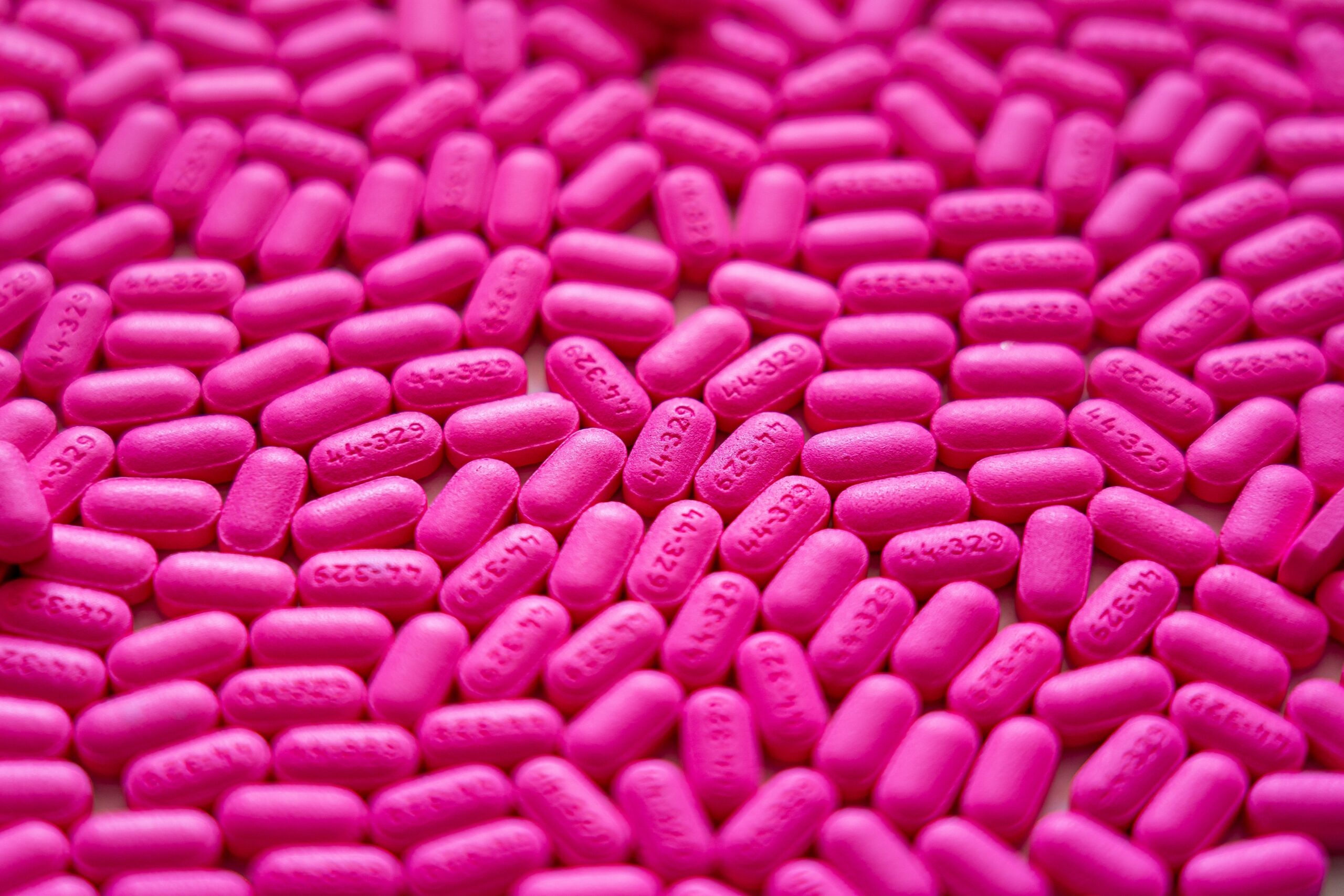Researchers looking for prevention and treatment strategies for COVID-19 that are not impacted by SARS-CoV-2 mutations published findings in Pathogens that showed that a combination of diphenhydramine (the active ingredient antihistamine in Benadryl) with lactoferrin (an immunologically active protein found in human and cow milk) reduced SARS-CoV-2 replication by 99% in human cells.
Background
The key to the researchers’ findings related to proteins called the sigma receptors. These receptor proteins are located in the endoplasmic reticulum (ER), an organelle responsible for protein folding and transportation. Sigma receptors have multiple functions, including regulation of the ER stress response.
The ER stress response occurs when the ER is overwhelmed with unfolded or misfolded proteins. This triggers the unfolded protein response (UPR), which seeks to return the cell to a normal state by increasing protein folding, autophagy (destruction of damaged proteins), and in the case of prolonged UPR, apoptosis (cell suicide).
ER stress usually occurs when the ER is overwhelmed with unfolded or misfolded proteins. Cells mitigate ER stress by provoking the unfolded protein response (UPR), which includes increased protein folding, autophagy (destruction of damaged proteins) and, in prolonged cases, apoptosis (cell suicide).
When the UPR causes autophagy, it does so by forming sites near the ER called autophagosomes. Coronaviruses (CoV) have been found to bind directly to the sigma-2 receptor to cause ER stress, enabling them to hijack autophagosomes for use as virus replication sites.
Implication
Researchers found that by binding a drug molecule to the sigma-2 receptor, SARS-CoV-2 would no longer be able to bind to it to cause ER stress (and ultimately virus replication). This is made even more effective by also binding to and activating the function of the sigma-1 receptor.
Results
The team identified a ligand called AZ66 as being able to bind to both sigma-1 and sigma-2 receptors. In experiments with human lung cells infected with SARS-CoV-2, AZ66 completely blocked virus production. However, the safety of AZ66 is unknown, as the drug candidate has not been tested in clinical trials.

Searching for common compounds with proven records of safety, the researchers analyzed electronic medical records to identify diphenhydramine (DPH), the active ingredient antihistamine in Benadryl, as being associated with higher survival rates for COVID-19 patients. This is due to DPH having effects on the sigma-1 receptor. DPH was found to reduce replication of SARS-CoV-2 in the infected human lung cells by about 30%.
Lactoferrin is an antimicrobial and immunostimulatory iron-sequestering protein found in human and cow milk that was brought to a researcher’s attention by the Global Virus Network’s COVID-19 task force due to its antiviral effects on SARS-CoV-2. When tested, it was also found to reduce virus replication by about 30%. The milk protein has a proven safety record as a supplement widely used to treat stomach ulcers.
When a diphenhydramine/lactoferrin combination was tested in human and monkey epithelial lung cells, they found that a synergistic effect occurred, reducing virus replication by 99%.
Commentary
The study’s first author, David A. Ostrov, Ph.D. of the University of Florida, hailed diphenhydramine and lactoferrin as “effective, economical,” and unlike AZ66, “[having] a long history of safety.” The combination could be used to prevent infection as well as decrease recovery time from COVID-19.
While the researchers await potential interest from pharmaceutical companies, Ostrov told the University of Florida Health Newsroom that he cautions against self-medicating with diphenhydramine or lactoferrin as a COVID-19 prevention or treatment. He said that any off-label use of medication should follow a consultation with a physician. Further, commercially available lactoferrin used for treatment of stomach ulcers is not exactly the same as the lactoferrin used in the study.
Lactovid™ is a combination of diphenhydramine and lactoferrin
Warning against off-label self-medication
This article does not offer medical advice. University of Florida researcher, David A. Ostrov, Ph.D., said that any off-label use of medication should follow a consultation with a physician. Off-label use is when a medication is used for anything other than its approved purpose.
This article is based on the following sources
– Bennett, D. (2020, December 3). Existing antihistamine drugs show effectiveness against COVID-19 virus in cell testing. University of Florida Health Newsroom. https://ufhealth.org/news/2020/existing-antihistamine-drugs-show-effectiveness-against-covid-19-virus-cell-testing
– Bennett, D. (2021, November 22). Two common compounds show effectiveness against COVID-19 virus in early testing. University of Florida Health Newsroom. https://ufhealth.org/news/2021/two-common-compounds-show-effectiveness-against-covid-19-virus-early-testing
– Ostrov, D. A., Bluhm, A. P., Li, D., Norris, M. H., et al. (2021, November 20). Highly specific sigma receptor ligands exhibit anti-viral properties in SARS-Cov-2 infected cells. Pathogens. https://doi.org/10.3390/pathogens10111514
– Vela, J. M. (2020). Repurposing sigma-1 receptor ligands for COVID-19 therapy? Frontiers in Pharmacology. https://doi.org/10.3389/fphar.2020.582310
Reed is a Health Science student and published virology researcher at the University of Florida. His areas of interest are immunology and general biomedical research. Reed founded OneResearch.org as a free online source to highlight biomedical research and combat medical disinformation.

One reply on “Combining a Protein Found in Milk with Benadryl Reduces SARS-CoV-2 Replication in Lung Cells by 99%”
I read about this study out of Florida in 2020. When my husband came down with Covid I started taking Benadryl and lactoferrin. He was sick in bed for a week and all I had was a slight cold for two days. I think the drug combination and my extra vitamins made all the difference.